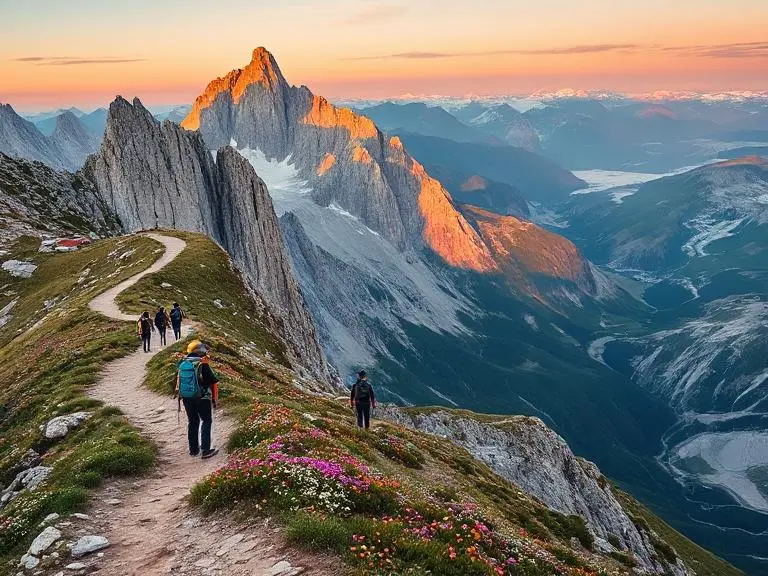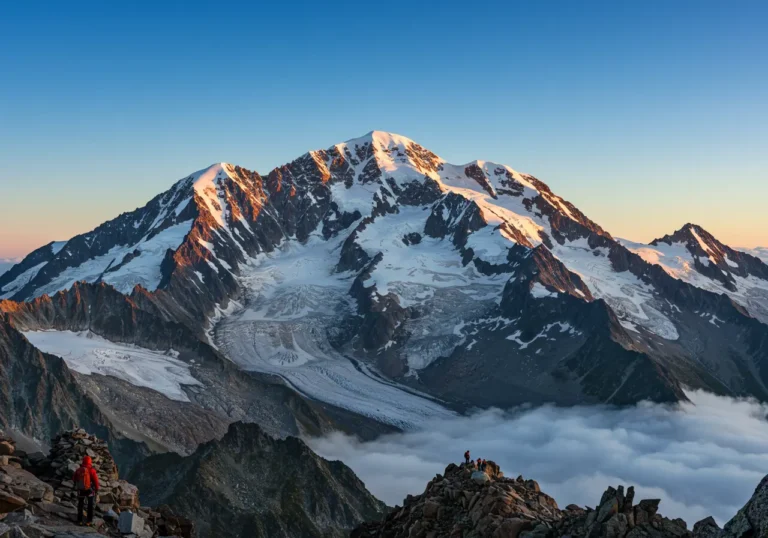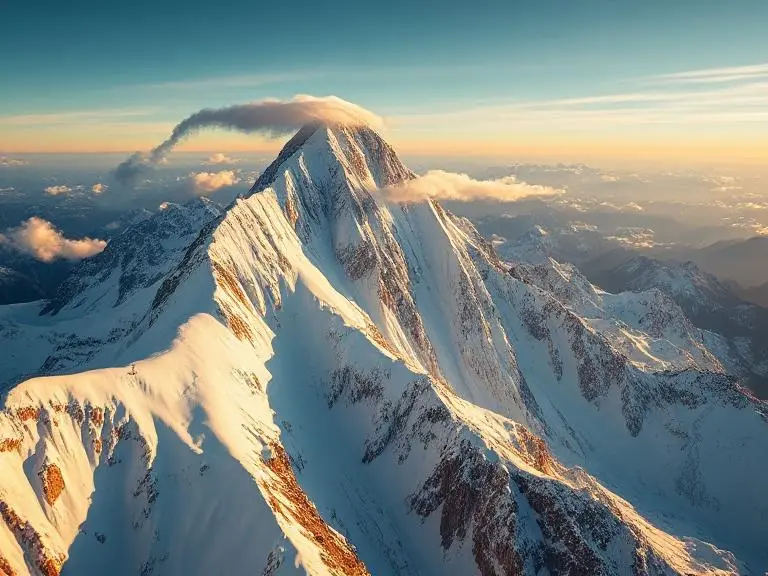10 Best Hikes in the Dolomites for Breathtaking Views
Introduction
Overwhelmed by planning the perfect hiking adventure in the Dolomites? With countless trails crisscrossing these UNESCO World Heritage mountains, choosing the right routes can feel impossible. This comprehensive guide reveals the best hikes in the Dolomites that deliver truly breathtaking views, ensuring your Alpine adventure exceeds every expectation.
As a travel strategist and hiking enthusiast, I’ve spent years exploring the Dolomites’ towering peaks, pristine lakes, and dramatic limestone formations. From sunrise photography sessions on Seceda to multi-day treks through remote valleys, I’ve tested dozens of trails to identify the absolute must-do hikes.
This guide covers the top 10 hiking routes for spectacular views, essential planning tips, travel preparation advice, and detailed itineraries to help you make the most of your Dolomites adventure. Whether you’re seeking challenging alpine ascents or leisurely meadow walks, you’ll discover the perfect trails for unforgettable mountain experiences.
Table of Contents
Why Visit Italy
Italy captivates travelers with its incredible diversity, seamlessly blending world-class art, rich history, and exceptional cuisine into one unforgettable destination. The country’s cultural treasures span millennia, from Roman ruins and Renaissance masterpieces to vibrant modern cities that pulse with contemporary energy.
Key reasons to explore Italy include:
• Offers world-class art, history, and cuisine – Experience Michelangelo’s Sistine Chapel, savor authentic pasta in Bologna, and walk through ancient Roman forums • Easy transport between cities and regions – Efficient trains connect major destinations, while regional buses reach remote mountain villages and coastal towns • Perfect for romantic getaways, family trips, or adventure seekers – Italy accommodates every travel style, from luxury wine tours to budget backpacking and extreme sports
The country’s compact size means you can experience Alpine peaks, Mediterranean beaches, and historic city centers within days of each other, making Italy an ideal destination for diverse, multi-faceted adventures.
Choosing the Right Destination
Selecting the perfect Italian destinations depends on your travel style, interests, and the experiences you’re seeking. Different regions offer distinct advantages for various types of travelers.
Best Cities for First-Time Travelers: Rome, Florence, Venice
Rome provides the quintessential Italian introduction with its ancient Colosseum, Vatican treasures, and vibrant street life. Florence showcases Renaissance art at the Uffizi Gallery while offering intimate Tuscan charm. Venice delivers romantic canal experiences and unique architecture that exists nowhere else on earth. These three cities form Italy’s classic triangle, connected by high-speed trains for easy exploration.
Nature Escapes: Dolomites, Lake Como, Amalfi Coast
The Dolomites offer world-class hiking with dramatic limestone peaks and alpine meadows perfect for outdoor enthusiasts. Lake Como provides serene mountain lake scenery combined with elegant Italian villa culture. The Amalfi Coast delivers stunning Mediterranean coastal views with charming clifftop villages. Each destination offers distinct natural beauty and outdoor activities.
Planning & Preparation
Proper preparation ensures your Italian adventure runs smoothly and maximizes your time exploring rather than dealing with logistics issues.
Travel Essentials: Packing tips, local SIM cards, transport passes
Pack lightweight, layered clothing suitable for changing mountain weather and comfortable hiking boots for Dolomites trails. Purchase local SIM cards or international roaming plans for reliable navigation and communication. Invest in transport passes like Eurail for multiple train journeys or regional bus passes for accessing remote hiking trailheads efficiently.
Accommodation Tips: Boutique hotels, agriturismos, or Airbnb
Boutique hotels in city centers offer luxury and convenience with concierge services for restaurant reservations and activity bookings. Agriturismos provide authentic rural experiences with home-cooked meals and local wine tastings. Airbnb rentals work well for longer stays and self-catering, especially in expensive destinations like Venice or the Amalfi Coast.
10 Best Hikes in the Dolomites for Breathtaking Views

Tre Cime di Lavaredo Loop
The iconic Tre Cime di Lavaredo represents the Dolomites’ most photographed peaks, and this moderate 10-kilometer loop delivers spectacular views from every angle. Starting from Rifugio Auronzo, the well-marked trail circles these three dramatic limestone towers, offering countless photo opportunities and panoramic vistas across the surrounding alpine landscape. The hike takes approximately 3-4 hours and requires no technical climbing skills, making it accessible to most fitness levels. Morning light creates magical golden hour photography, while afternoon brings dramatic shadows across the towering rock faces. Mountain huts along the route serve traditional alpine meals and provide rest stops with unbeatable mountain views.
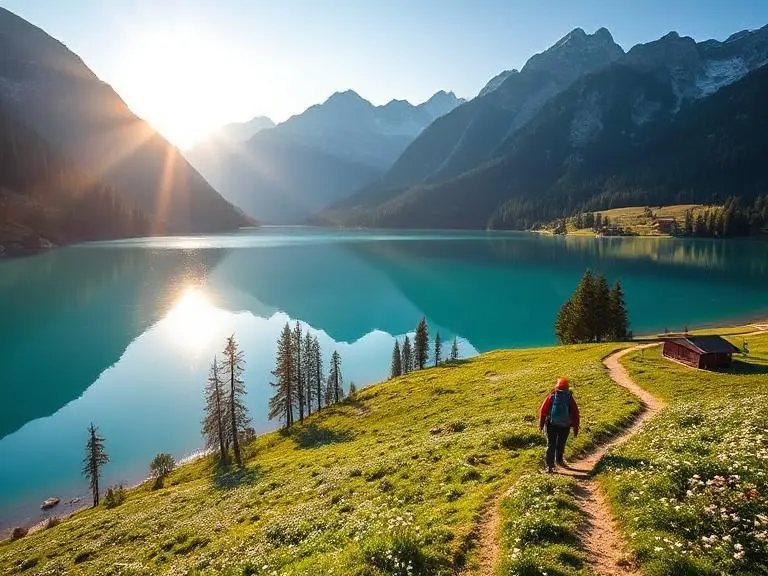
Lago di Braies to Fanes-Senes-Braies Plateau
This stunning hike begins at the emerald waters of Lago di Braies, often called the “Pearl of the Dolomites,” before ascending to the expansive high-altitude plateau above. The trail combines lakeside walking with gradual mountain ascents, rewarding hikers with sweeping panoramic views across multiple mountain ranges and pristine alpine meadows dotted with wildflowers during summer months. The round-trip journey covers approximately 12 kilometers with moderate elevation gain, suitable for intermediate hikers seeking diverse terrain and spectacular photo opportunities. Wildlife sightings including marmots and mountain birds add natural wonder to the experience. The plateau offers incredible sunset viewing positions, making this trail perfect for longer hiking days with memorable golden hour moments.
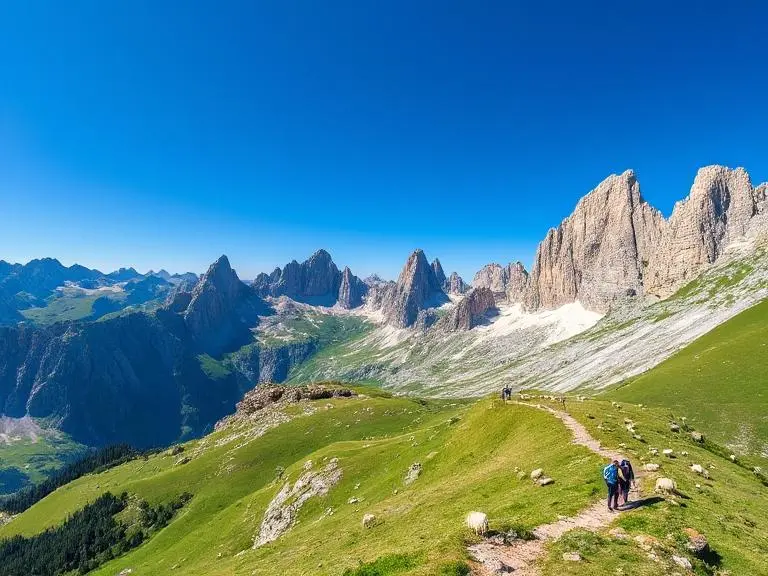
Seceda Ridgeline Hike
Seceda’s knife-edge ridgeline provides some of the most dramatic and Instagram-worthy views in the entire Dolomites region, with sweeping panoramas across the Odle peaks and Puez mountain range. Accessible via cable car from Ortisei, this relatively easy 6-kilometer hike follows the mountain ridge at approximately 2,500 meters elevation, offering constant spectacular views without significant elevation changes. The grassy ridgeline creates perfect picnic spots with 360-degree mountain vistas, while the famous Seceda peak provides iconic photography angles that capture the Dolomites’ unique geological formations. Early morning visits avoid crowds and provide the best lighting conditions for photography. Weather can change rapidly at this elevation, so proper mountain gear remains essential for safety.
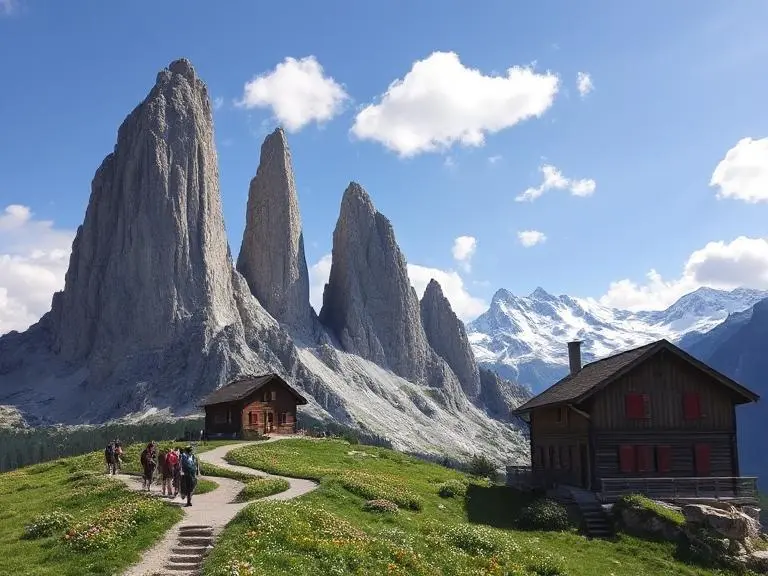
Cinque Torri Trail
The Cinque Torri (Five Towers) trail offers a fascinating combination of natural beauty and historical significance, featuring distinctive rock formations alongside World War I trenches and military installations. This moderate 5-kilometer loop starts from the Cinque Torri cable car station and winds through these iconic limestone pinnacles, providing excellent rock climbing opportunities for experienced climbers and spectacular viewing points for hikers. The trail includes an open-air museum showcasing restored WWI fortifications, adding educational value to the scenic mountain experience. Multiple route variations accommodate different fitness levels, from easy walks around the base to more challenging scrambles up rocky sections. The towers create natural amphitheaters perfect for rest stops while admiring the surrounding Dolomite peaks and valleys.

Lago di Sorapis Hike
The turquoise waters of Lago di Sorapis create one of the most striking color contrasts in the Dolomites, nestled beneath towering limestone cliffs and accessible via a moderately challenging 6-kilometer trail. The hike begins from Passo Tre Croci and follows a sometimes narrow mountain path with several exposed sections requiring sure footing and proper hiking boots. The lake’s incredible blue-green color results from glacial sediments, creating photography opportunities unlike anywhere else in the Alps. Rocky debris and scree sections add adventure to the approach, while the final descent to the lake provides dramatic reveal moments. The return journey offers different perspectives of the surrounding peaks, including views toward Cortina d’Ampezzo and the eastern Dolomites ranges.
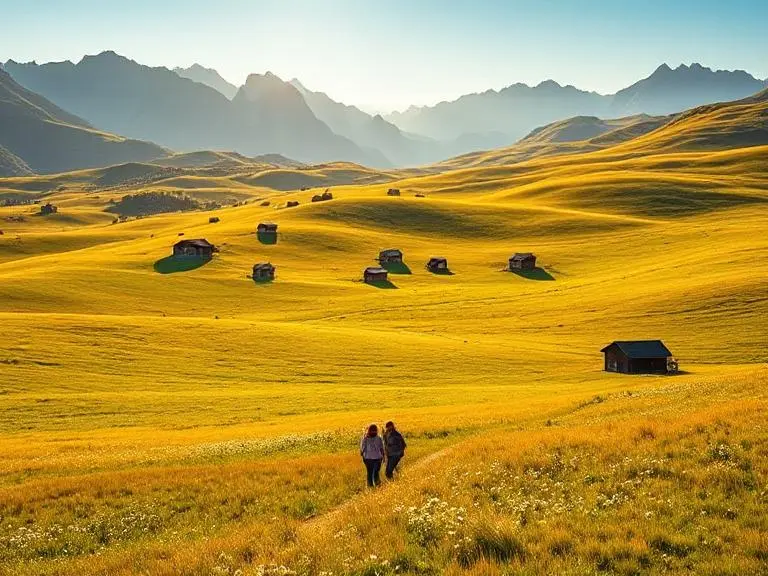
Alpe di Siusi (Seiser Alm) Meadows Walk
Europe’s largest high-altitude alpine meadow provides gentle, family-friendly hiking across rolling grasslands with constant mountain panoramas and seasonal wildflower displays that create natural carpets of color. The Seiser Alm plateau offers numerous trail options from easy 2-kilometer strolls to longer 15-kilometer circuits, all featuring relatively flat terrain perfect for leisurely exploration and photography. Traditional mountain huts serve local South Tyrolean cuisine, including speck, knödel, and fresh dairy products produced on the plateau. The area’s unique microclimate supports diverse flora and fauna, making it excellent for nature observation and botanical photography. Sunset and sunrise viewing from the meadows provides magical lighting across the surrounding Sassolungo, Sciliar, and Odle mountain groups.
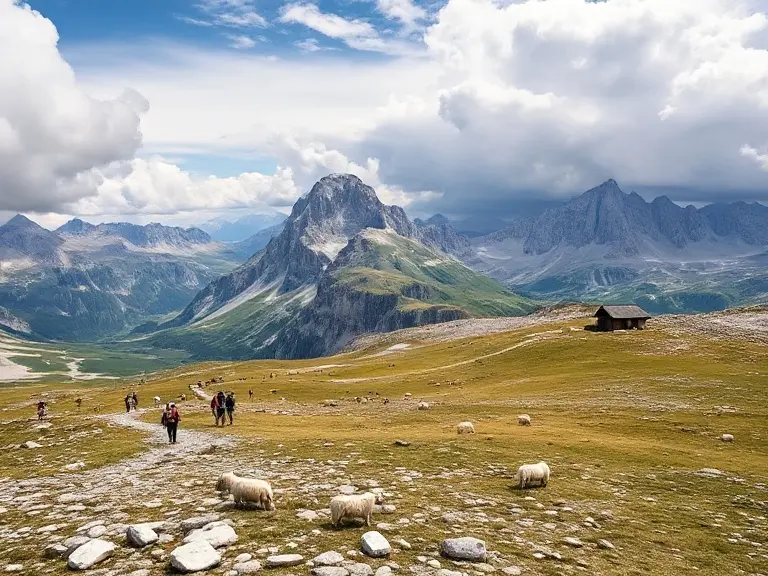
Puez-Odle Altopiano Trail
This high-altitude plateau trail showcases some of the Dolomites’ most diverse geological formations while providing panoramic views across multiple mountain ranges and valleys. The moderately challenging route covers approximately 8 kilometers across the Puez-Odle Nature Park, featuring unique rock formations, alpine lakes, and expansive meadows that demonstrate the region’s complex geological history. Multiple access points via cable cars from different valleys allow flexible route planning and various difficulty levels to suit different hiking abilities. The trail passes several mountain refuges offering traditional alpine hospitality and local cuisine with spectacular terrace dining overlooking the surrounding peaks. Geological interpretation signs explain the fascinating processes that created these distinctive limestone formations over millions of years.
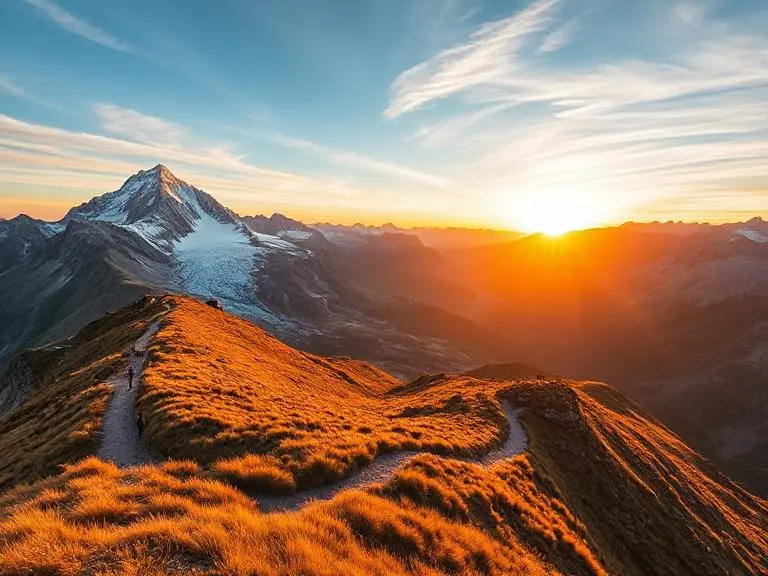
Viel del Pan Trail with Marmolada Views
The historic Viel del Pan trail follows ancient trade routes across high mountain passes while providing spectacular views of Marmolada, the Dolomites’ highest peak and its impressive glacier. This challenging 12-kilometer high-altitude route connects multiple mountain huts and requires good fitness levels due to significant elevation changes and potential weather exposure. The trail’s historical significance as a World War I supply route adds cultural depth to the mountain scenery, with several memorial sites and restored military positions along the way. Marmolada’s glacier provides dramatic photographic subjects, especially during morning and evening light when the ice fields reflect golden alpine glow. The route offers excellent training for more technical mountaineering routes while remaining accessible to experienced hikers.
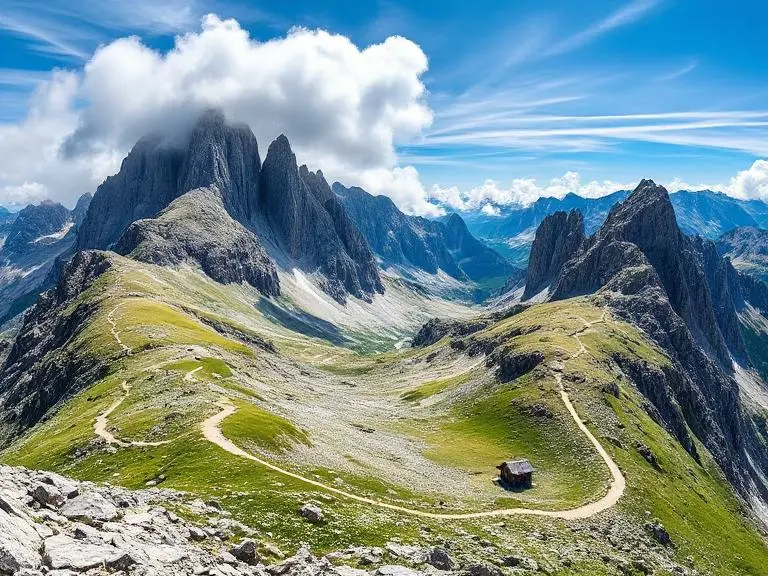
Sassolungo and Sasso Piatto Circuit
This spectacular circuit around the Sassolungo Group provides constantly changing perspectives of these iconic Dolomite peaks while traversing diverse alpine terrain including meadows, rocky paths, and high mountain passes. The challenging 15-kilometer loop requires a full day and good fitness levels but rewards hikers with some of the region’s most comprehensive mountain panoramas and geological diversity. Multiple route variations allow customization based on weather conditions and hiking experience, with options for technical via ferrata sections or gentler valley approaches. The circuit passes several mountain refuges strategically positioned for rest stops, meals, and overnight stays for multi-day hiking adventures. Wildflower displays during summer months create colorful foregrounds for dramatic mountain photography throughout the route.
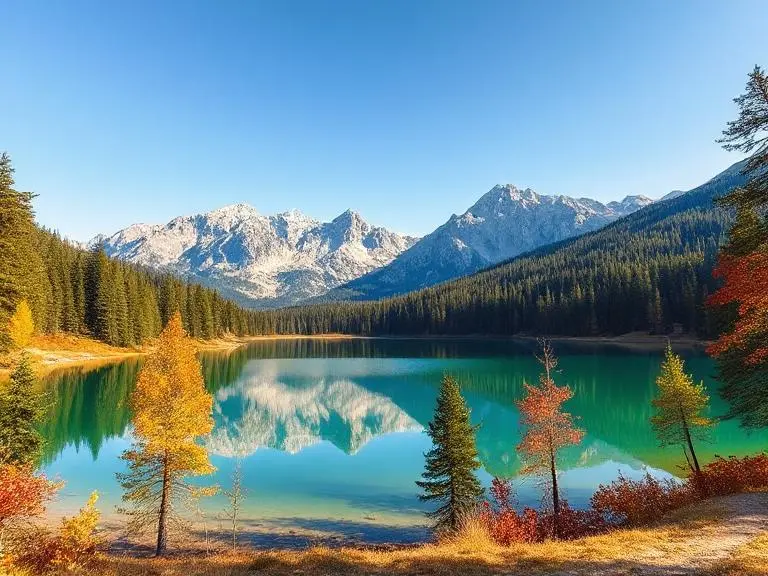
Tovel Lake and Brenta Dolomites Path
Tovel Lake’s crystal-clear waters provide a serene hiking destination in the lesser-visited Brenta Dolomites, offering spectacular mountain reflections and diverse wildlife viewing opportunities in a more peaceful setting. The moderate 8-kilometer trail around the lake and extending into the surrounding Brenta massif features well-maintained paths suitable for families while still providing challenging extension options for experienced hikers. The area’s unique ecosystem supports brown bears, though sightings remain rare, and diverse bird species that make it excellent for wildlife photography and nature observation. Traditional mountain architecture in nearby villages showcases local building techniques adapted to alpine conditions. The lake’s famous red algae blooms, though less common now, occasionally create spectacular natural phenomena that attract photographers and scientists from across Europe.
Travel Tips
Successful Dolomites adventures require smart planning, useful tools, and practical safety measures to ensure smooth travels and memorable experiences.
Avoiding Travel Stress: “Book tickets online in advance,” “Travel off-season”
Book accommodation and cable car tickets online in advance during peak summer and winter seasons to avoid disappointment and secure better rates. Travel during shoulder seasons (May-June, September-October) for fewer crowds, pleasant weather, and lower prices while still enjoying good hiking conditions. Reserve restaurant tables in mountain huts, especially weekends and holidays, as popular refuges fill quickly. Consider purchasing museum and attraction passes online to skip entrance queues and save money on multiple visits.
Tool Recommendations: Google Maps offline, Omio app, Trenitalia
Download offline Google Maps for reliable navigation in areas with limited cell coverage, including detailed hiking trail information and points of interest. Use the Omio app for comparing and booking trains, buses, and flights across Europe with real-time schedules and mobile tickets. Install the Trenitalia app for Italian train bookings, seat reservations, and digital tickets that work offline. Mountain weather apps provide crucial safety information for high-altitude hiking planning and emergency situations.
Safety & Storage: “Keep money belts,” “Use lockers in train stations”
Use discreet money belts or hidden pockets for passports, credit cards, and emergency cash, especially in crowded tourist areas and public transport. Utilize secure lockers at train stations for day trips when carrying large backpacks becomes impractical for sightseeing or hiking. Keep digital copies of important documents stored in cloud services accessible offline through your phone. Inform accommodation hosts about your hiking plans and expected return times for additional safety measures.
FAQs
Is it safe to travel in Italy?
Italy is generally very safe for tourists, with low violent crime rates and well-developed tourism infrastructure throughout major destinations and mountain regions. Petty theft like pickpocketing can occur in crowded tourist areas, but basic precautions like securing valuables and staying aware of surroundings prevent most issues. Mountain hiking requires standard alpine safety measures including proper equipment, weather awareness, and route planning. Emergency services respond effectively, and mountain rescue teams provide professional assistance for serious hiking incidents.
What’s the best month to visit?
For optimal hiking in the Dolomites, aim for June through September. If you’re looking for warm weather and guaranteed snow-free trails, July and August are perfect, but be aware that you will be sharing the mountains with the most people. June and September provide excellent hiking conditions with wildflowers, pleasant temperatures, and fewer tourists, though some high-altitude trails may still have snow patches in early June. October offers beautiful autumn colors but unpredictable mountain weather and reduced cable car schedules. Winter sports enthusiasts should visit December through March for skiing and snow activities.
Do I need to speak Italian to get by?
English is widely spoken in major tourist areas, hotels, and restaurants, especially in the South Tyrolean Dolomites region where German is also common due to Austrian heritage. Basic Italian phrases enhance interactions and show cultural respect, but aren’t essential for navigation and basic needs. Translation apps provide helpful assistance for more complex communications, restaurant menus, and local signage. You’ll find that mountain hut staff are well-prepared for international visitors, often speaking a variety of languages. This, combined with trail signs that use international symbols and are written in multiple languages, makes navigating the trails and communicating with locals a seamless experience.
Conclusion
Pack your bags and start exploring Italy’s treasures today! The Dolomites offer some of the world’s most spectacular hiking experiences, combining dramatic limestone peaks, pristine alpine lakes, and well-maintained trail systems that accommodate every skill level and adventure preference.
Join thousands of travelers who fell in love with Italy’s magic through unforgettable mountain adventures. Whether it’s a sunrise photo session on the Seceda ridgeline or a peaceful walk across Alpe di Siusi, a hike in the Dolomites leaves a lasting impression. These are the kinds of memories that will have you coming back for more of this UNESCO World Heritage wonderland.
Whether you’re seeking challenging alpine circuits, family-friendly nature walks, or photography expeditions to capture iconic mountain landscapes, these carefully selected trails deliver the breathtaking views and authentic mountain experiences that make the Dolomites one of Europe’s premier hiking destinations. Your Alpine adventure awaits!

